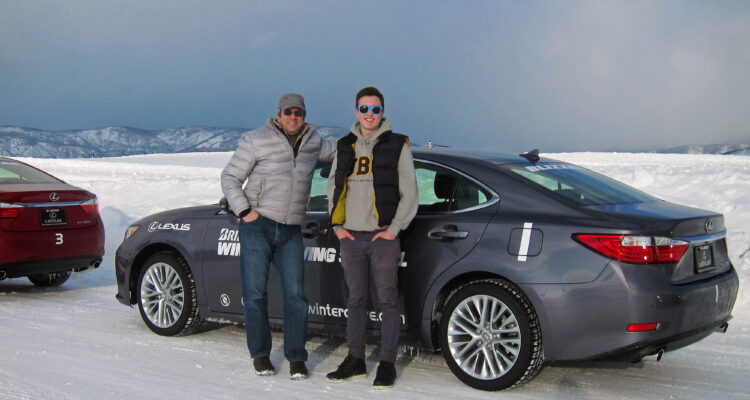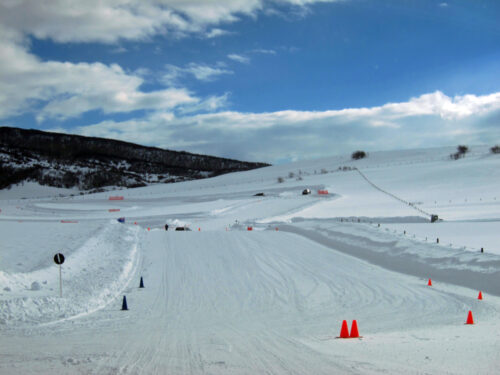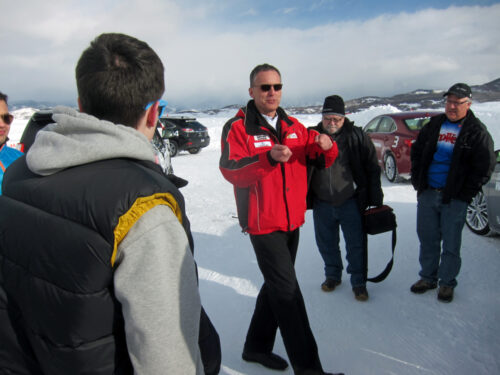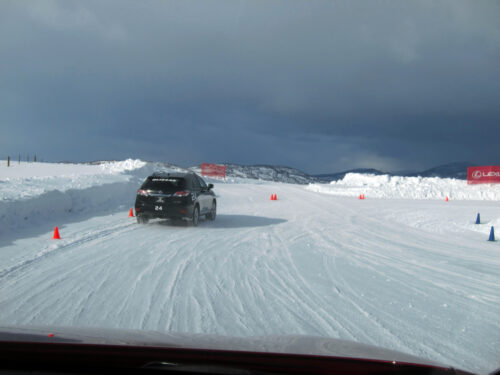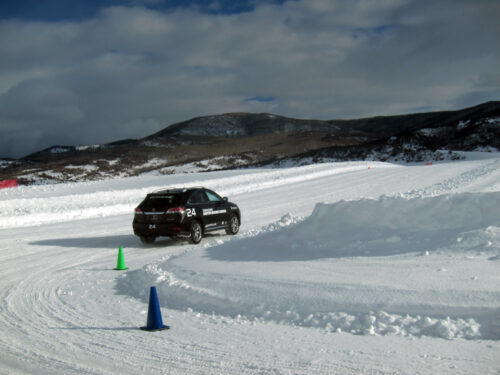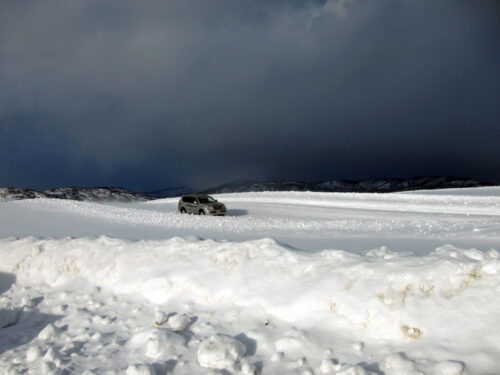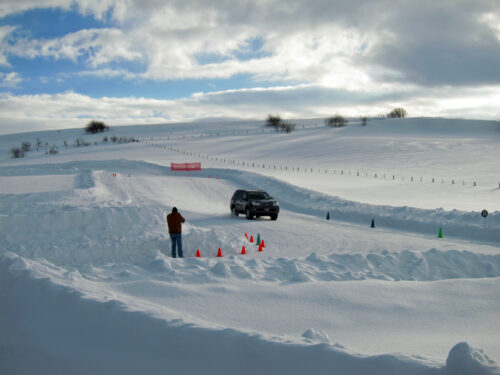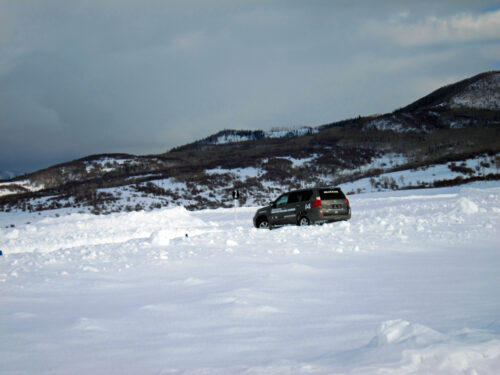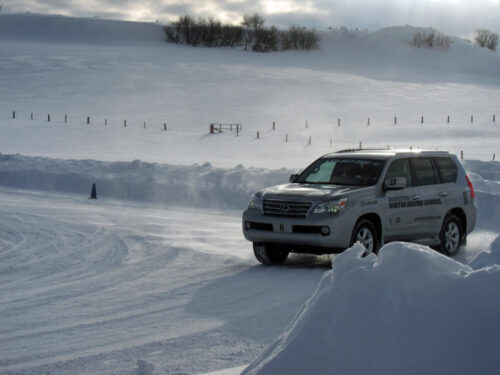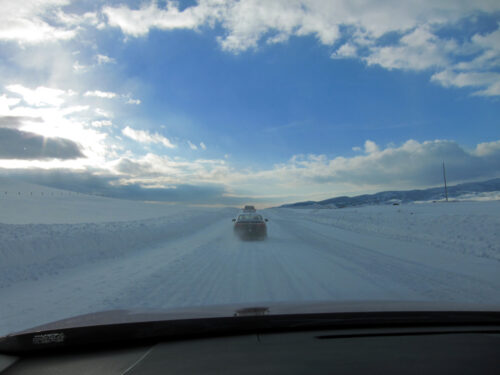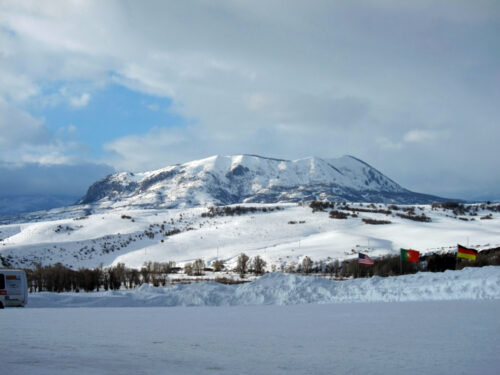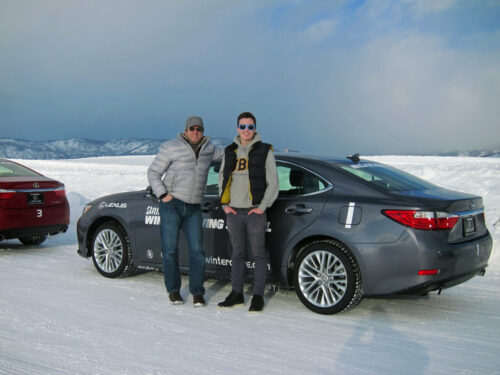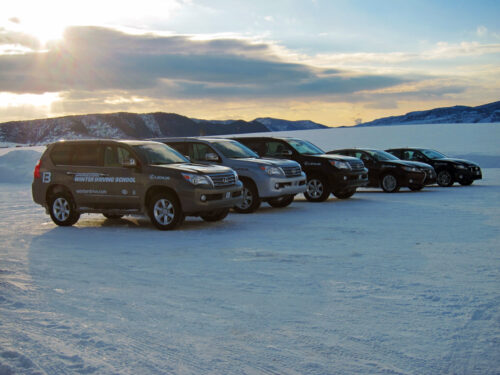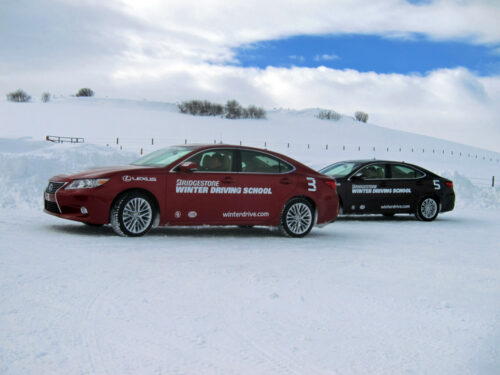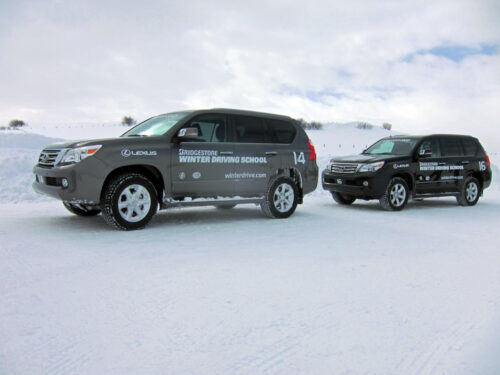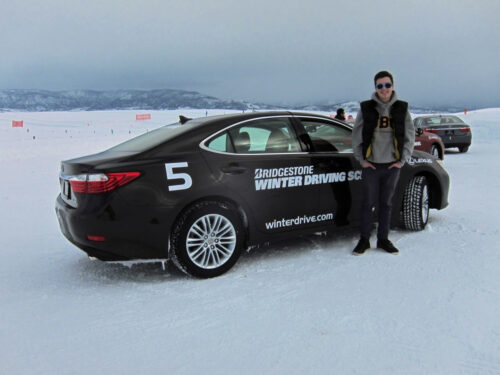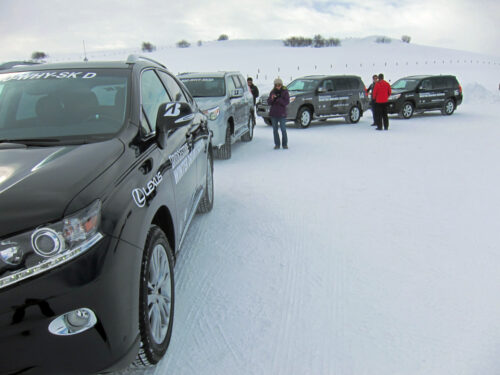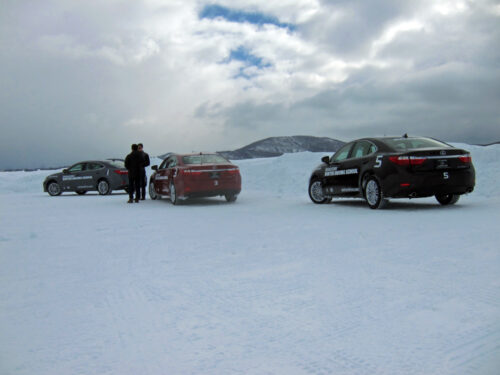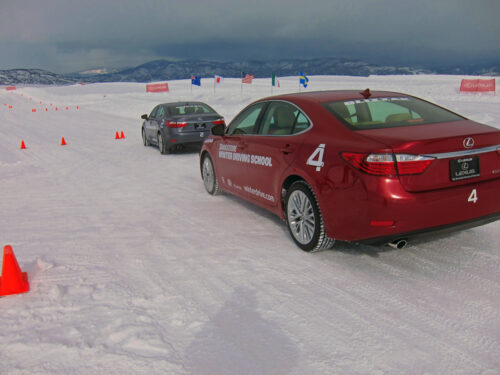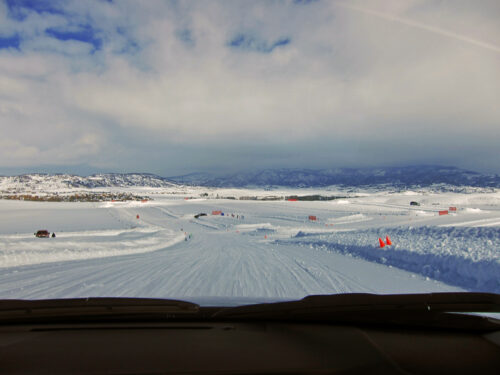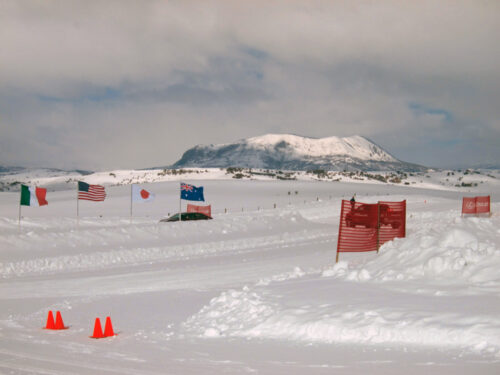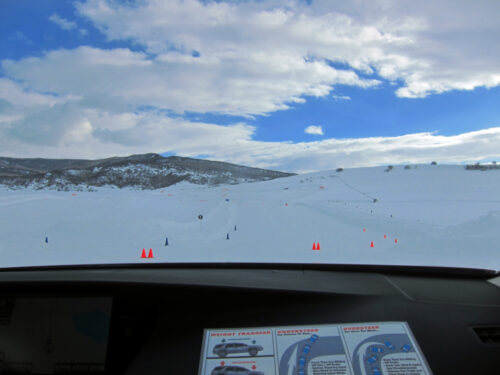I taught him to ski; now how do I teach him to get there safely? Surely I’m not the first parent to agonize over this question. Austin, this kid of mine, is eighteen-years old and a relatively new driver. He was practically born on skis, and now expects to drive himself and others to the ski hill with zero experience driving in snow and icy conditions. Now what?
Turns out there’s help, though expensive and distant.
Bridgestone Winter Driving Program
Bridgestone – yes, the tire company – operates a ‘unique to North America’ winter driving school just outside of Colorado’s Steamboat Springs ski resort, which they’ve done for thirty years. And with that many years behind them, you know they’ve got it right.
The “classroom” consists of three ice tracks spread over 80 acres of snow-blanketed rolling ranchland near the base of the majestic Sleeping Giant Mountain in Yampa Valley. The expanse allows room for long straight-aways followed by hairpins, hills and off-camber turns. This isn’t your typical parking lot or frozen-lake setup!
The school provides several levels of driver training, from introductory sessions to the expert stuff seen in World Rally racing. Most popular and relevant to newbies is the full-day session referred to as Second Gear. The program uses new Lexus-supplied vehicles shod in Bridgestone’s Blizzak snow tires.
With great anticipation, and a modicum of unease, the progeny and I seized upon an opportunity to attend a Second Gear session. We both participated as students. You see, when it comes to driving on sheer ice, even old dogs can learn new tricks.
Things that make sense, and things that are completely opposite
Some classroom theory started the day. We could expect to learn things that make sense and things that are completely opposite, remarked Kurt, our chief instructor. He was right; the remedy for under-steer being an example of the “opposite” due to the need to remove steering input in regaining traction rather than cranking harder on the wheel as most do because the car’s not turning.
Soon enough, we were shuttled into the vast whiteness of the ice track and the surrounding terrain. Two students to a car, with no spouses or family members riding together was the order of the day. (Watch an episode of Canada’s Worst Driver to appreciate the “no family” rule.)
The teaching format involves learning and perfecting a series of driving techniques applicable to slippery conditions, then linking those skills together during laps of the entire ice circuit while adding speed and building confidence. As our day progressed, the steps gelled into a seamless execution of control maneuvers designed to enhance control and performance in low-traction environments. Or in plain English: making it safely up and down the mountain.
Putting it to the old man
While aging dogs can learn new maneuvers with enough coaxing and positive reinforcement, young drivers are more likely to readily master the skills associated with low-traction driving; this I learned after mashing a cone in an emergency avoidance exercise. Austin on the other hand received pious praise for his razor-sharp execution performed without the intervention of antilock braking or stability control. These compensators for incompetence had been deactivated for much of our day, but that was a good thing.
By the end of the program, we were in full control, flying around an icy version of San Francisco’s famous Lombard Street without the benefit of electronic safety nets to keep the Lexus between snowbanks. While I can prattle on about the effectiveness and importance of proper winter driver-training for both young and old, perhaps I should give the kid a voice. Here’s his take on it:
Upon arrival at the Bridgestone Winter Driving School I felt a bit uneasy about what I was in for, but it turned-out to be the “best day ever!” Prior to the course, my sub-zero driving experience was minimal, only daring to venture out on four wheels during the friendliest of snow-free winter days. The enthusiastic and encouraging instructors taught me techniques to promote safe, controlled low-traction driving, instilling in me the confidence to tackle snowy and icy conditions. Overall, the training provided me with the ability to feel confident and secure driving in dangerous winter conditions, such as those that plague much of Canada. It also helped prepare me for driving to various ski hills, which will give my parents comfort as I pry the keys from their clenched fists when powder’s in the ski report. BTW – No cones dad. Obviously I’m a better winter driver!
Excuse me a moment while I remind my son that he’s eighteen, living at home and doesn’t have a job. Of course, as a fulltime university student I’m willing to cut him some slack. Clearly though, the guy that fills the tank is the better driver, summer and winter.
Joking aside, I can’t stress enough how valuable professional winter driving instruction can be, and not just for those new to the road. After driving through 38 Vancouver winters – some bad and some not – I thought I knew it all. Apparently I didn’t, and there’s a bruised ego and desecrated cone or two as evidence.
The details
The Bridgestone Winter Driving School operates roughly January to March, depending on weather. Complete information can be found at http://www.winterdrive.com/ .
Epilogue
Three winters later, 22-year old Austin drives frequently to Vancouver’s local ski hills and also Whistler/Blackcomb. Though a parent never stops worrying entirely, knowing that he has the Bridgestone Winter Driving School under his belt helps manage parental unease.



